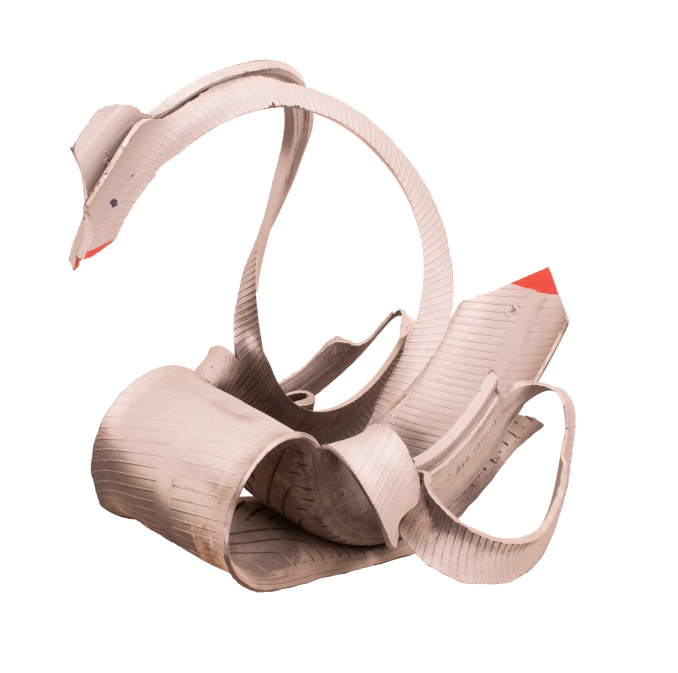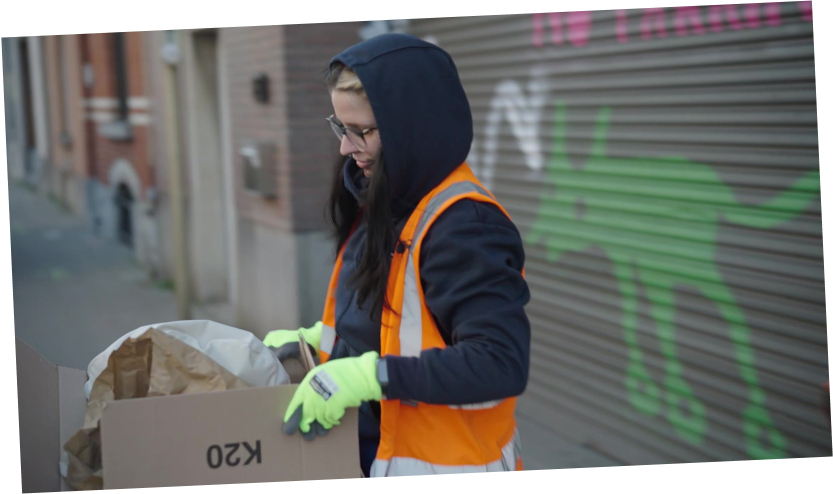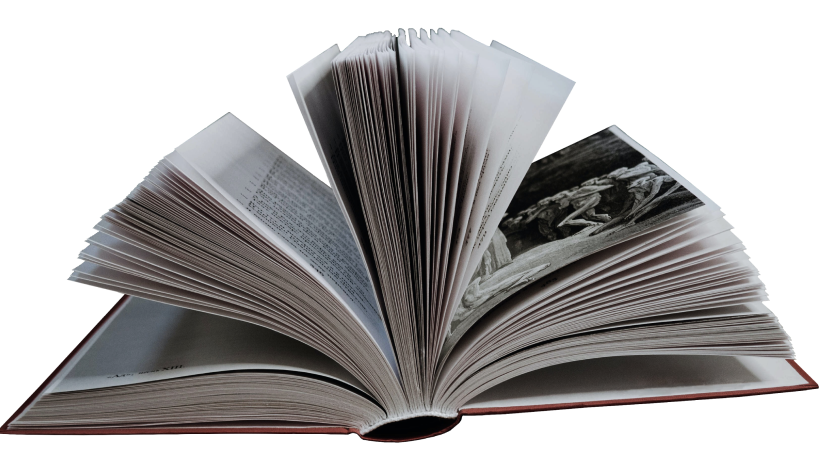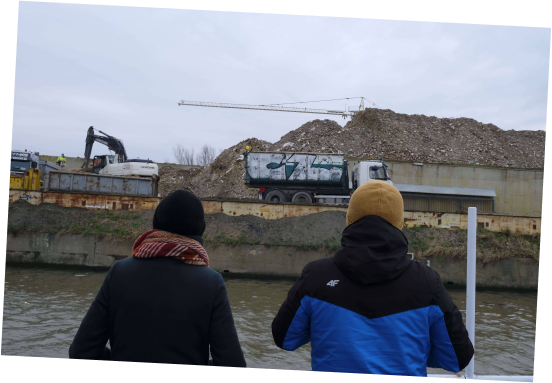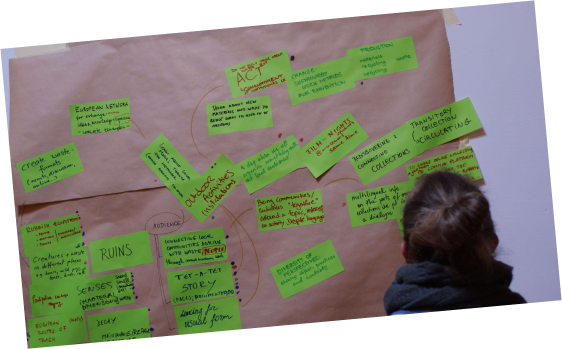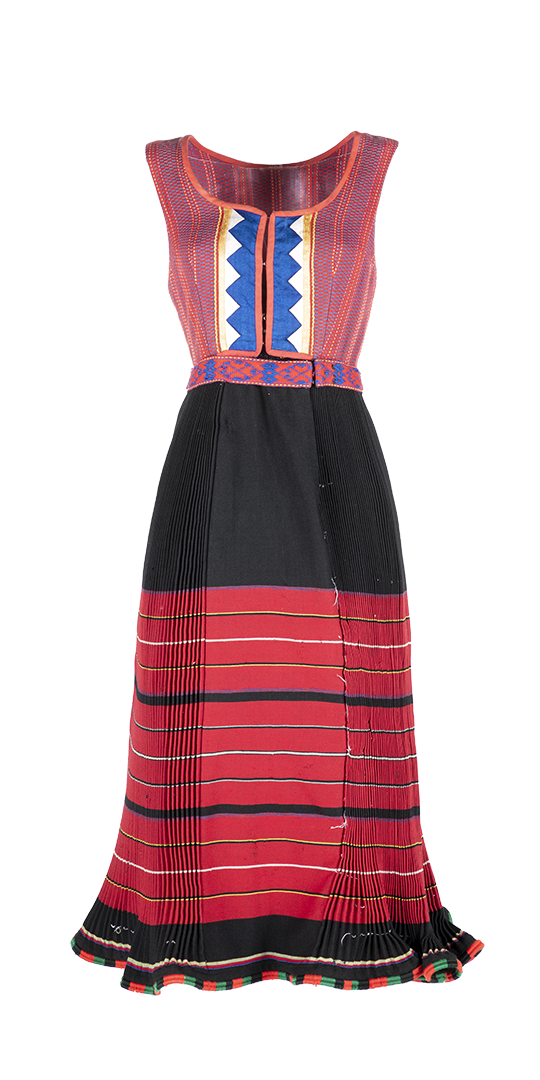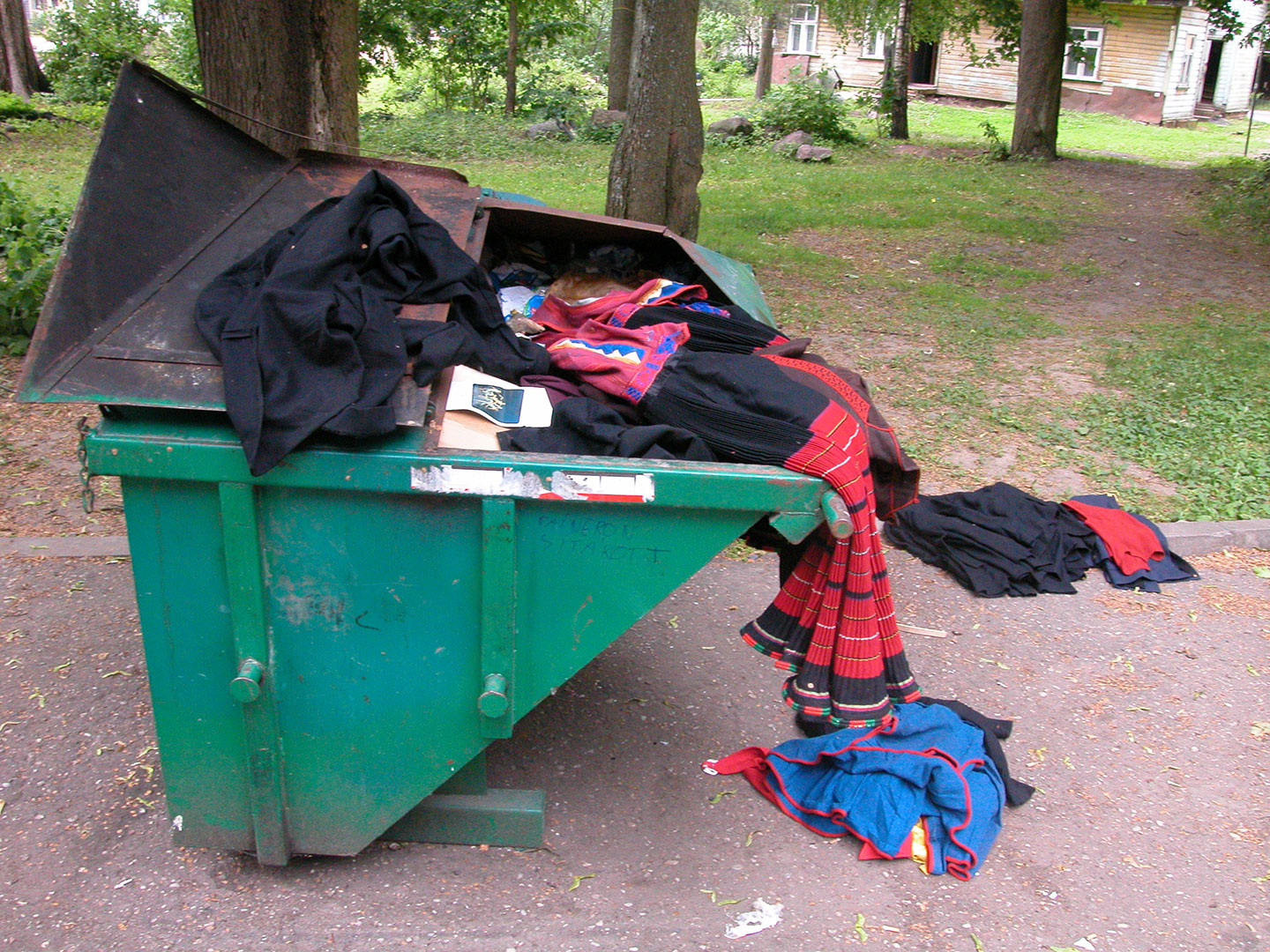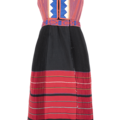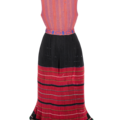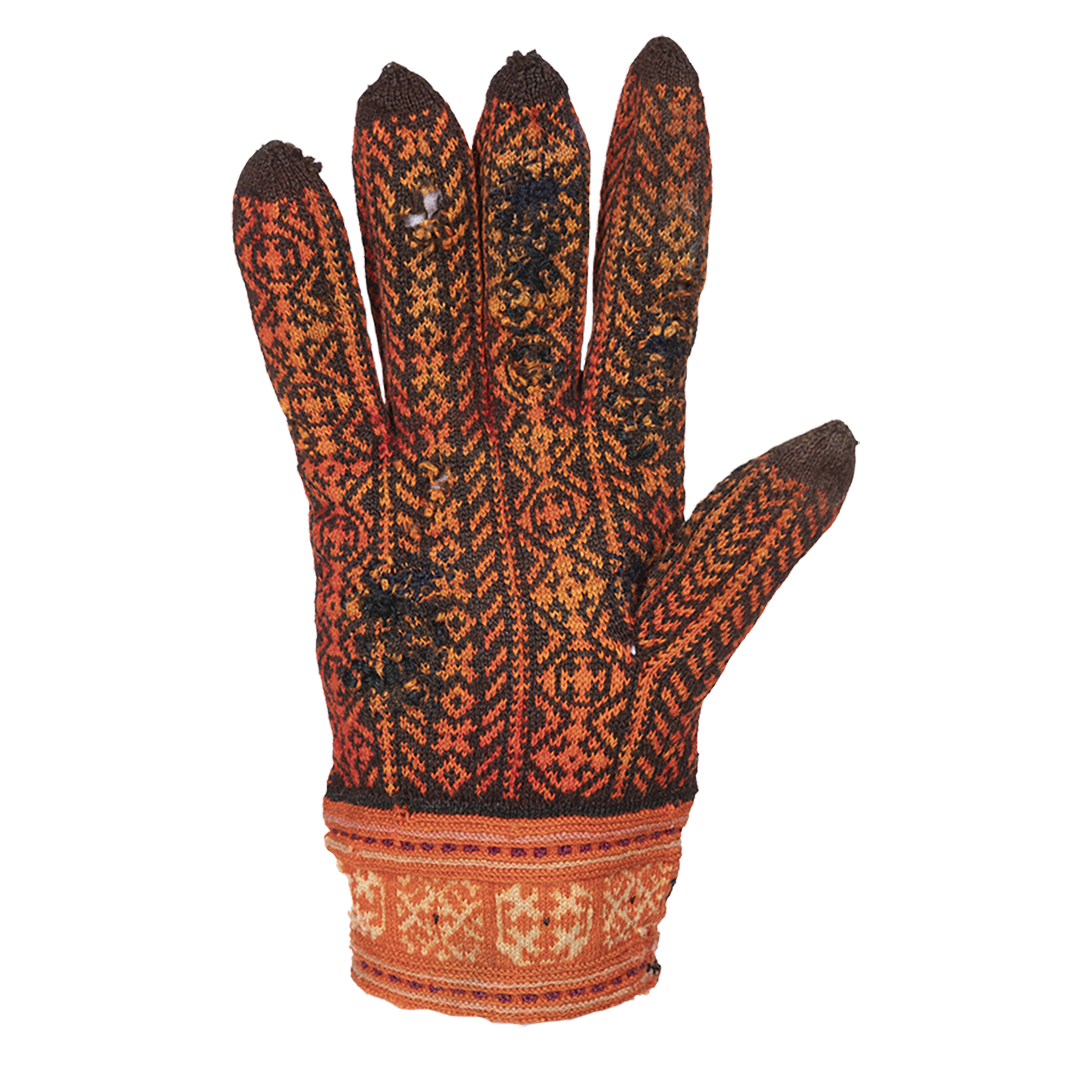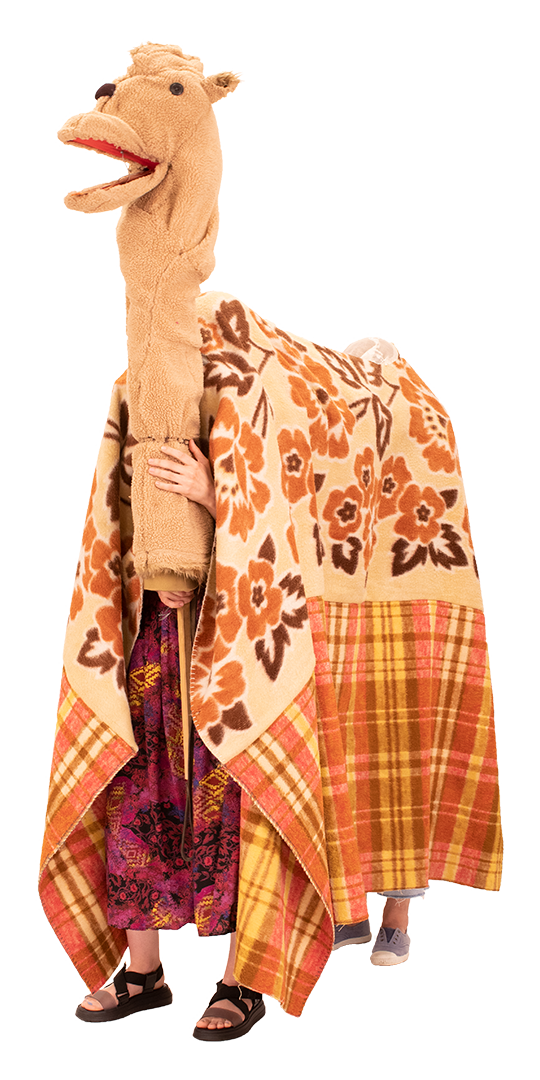Artist/Maker Unknown craftsperson, Kombinaat ARS
Date Production/Creation
Tallinna Kombinaat ARS (Tallinn Arts Funding Group)
Entry in the museum collection
2002
Place of origin
Waste bin
Current location
Estonian national museum, Tartu, Estonia
Material
Wool
Dimension
Length: 130 cm (overall); Length: 28 cm (bodice); Length: 102 cm (skirt)
Inventory Number ERM AM 619
Keyword Cultural heritage Costume Textile
Copyright Estonian National Museum
Status Textiles storage /collections
Image Credit Estonian National Museum
Saved from the bin: Soviet-era Estonian national costume.
What is this object about, who are the people behind it?
Estonian national dress made for the students’ folk dance group in the 1980s when university dance clubs took part in various events, festivals and song and dance celebrations in the Soviet era.
What places is this object related to, how European/transnational is it?
The Estonian National Museum houses countless unique examples of Estonian ethnography linked to everyday life in Estonia. Today, folk dance groups can purchase such items at great cost from expert traditional craftspeople, although original examples are occasionally discovered among the rubbish by builders. A folk culture advice centre has been set up within the museum where the museum’s experts give advice, and craftspeople assist in valuations as well as help to repair and give a new life to important items of old clothing; the museum has a presence at Europe’s largest song and dance festival in Tallinn via its stall "First Aid for National Dress"; the stall also provides the opportunity to consult or advise on national dress, and quickly perform on-the-spot repairs enabling further performances to go ahead while preserving the tradition of authentic folk heritage in Europe. The 150-year old tradition of a song and dance celebration that Estonia shares with the other Baltic countries is inscribed on UNESCO’s List of Intangible Cultural Heritage.
Why and how did this object arrive in the museum’s collection?
Some museum employees happened to be passing a building located close to the museum; the building had housed the renowned students’ club and was undergoing extensive and comprehensive renovations following a move into private ownership.
What is the relation of this object to waste?
It occurred at a time when many valuable items were thrown away in error. Some beautiful items of national dress and costumes for brass band performances randomly found their way into the wrong place in the whirl of renovations to meet European standards in 2002. By chance, employees of the Estonian National Museum noticed some beautiful, colourful objects peeking out. Together with some ethnologists, the head curator of the ERM retrieved the valuable skirts and saw some stylised skirts, men’s hats and other items that had been produced by Kombinaat ARS. The garments reclaimed from the bin were aired, cleaned by conservators and have now been passed on to the museum’s handling collection so that people who are interested can try them on, use them at events and take them to song and dance celebrations for performances.

